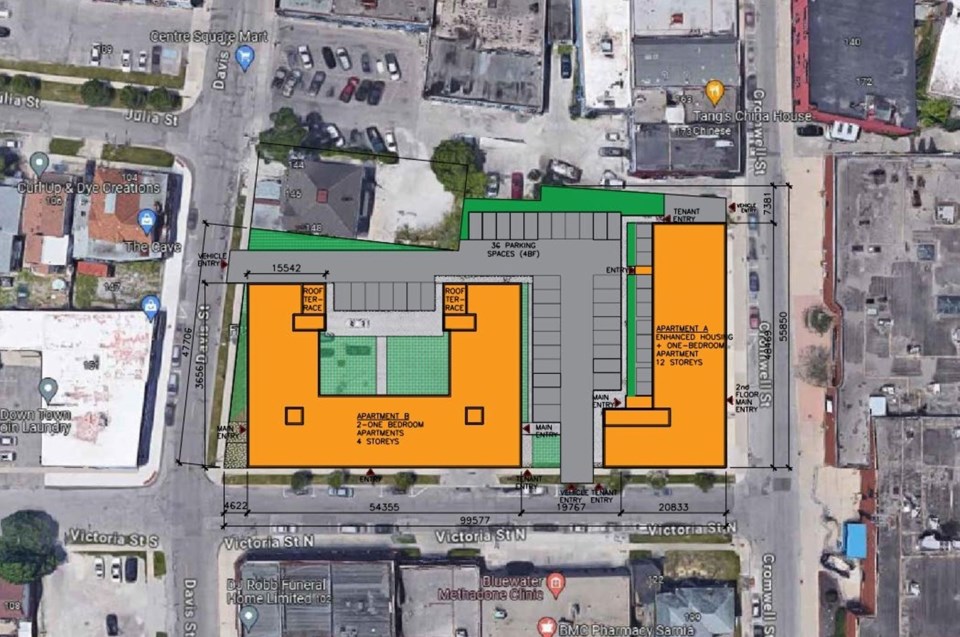In a recent turn of events, Sarnia's downtown business community has made its voice heard loud and clear: they want to preserve parking over supporting affordable housing in the heart of our city. As someone who values the role of small businesses in our community, I'm pleased to see the Downtown Business Collective’s strong advocacy and unity. Small businesses are the lifeblood of any city, and their opinions matter. But it's unfortunate and deeply concerning that this collective energy is being directed toward blocking a much-needed housing development that could fundamentally enhance the very downtown environment these businesses are working to uplift.
The proposed project, an affordable housing development on the Victoria Street parking lot, represents a vision of Sarnia as a thriving, inclusive city where people from all walks of life live, work, and contribute to a vibrant urban core. Downtowns thrive when people live in them—not when they’re treated as destinations to visit and then promptly vacate. What our small business community is advocating here, whether intentionally or not, is for downtown Sarnia to remain a place of transient activity, where people drive in, park, shop, and leave. This is a narrow view of what a city center can be, and it’s one that misses the transformative potential of integrating residential life into the core of our downtown.
The arguments against affordable housing—citing loss of parking and concerns about the suitability of downtown for low-income residents—reflect a troubling “Not In My Backyard” (NIMBY) mindset that is all too common in Sarnia. This mindset resists change and excludes people who need affordable housing, often driven by the notion that those who live in low-income housing are incompatible with the vision of a lively, cultured downtown. But if we look at any major city, from Toronto to New York to London, it’s precisely this diversity of use and people—residents of all income levels and backgrounds—that brings character, vibrancy, and resilience to urban centers. Mixed-use, mixed-class cities are beautiful because they reflect the full spectrum of society. Why should Sarnia be any different?
The Downtown Business Collective’s letter raised concerns about the area’s lack of amenities for potential residents, like grocery stores, schools, and daycares. However, amenities develop around communities; they don’t simply appear in anticipation of them. Building affordable housing downtown would not only bring residents closer to existing services but would also attract new ones. With a base of residents downtown, the demand for grocery stores, schools, and other essential services would rise. Businesses would have more consistent local foot traffic, benefiting from a steady stream of patrons just steps away. Housing and commerce can and should grow in tandem, each enriching the other.
The choice here—between parking and housing—isn’t just about spots for cars. It’s about priorities, values, and the vision we have for Sarnia’s future. Preserving every last parking space at the cost of affordable housing sends a clear message: cars are welcome, but people in need are not. Sarnia’s NIMBY problem, unfortunately, means we’re often more protective of parking spots than we are of our fellow citizens. If we aspire for Sarnia to grow into a decent place to live, we need to challenge this mindset and make room—literally and figuratively—for all people, not just the privileged few.
Cities that are vibrant and successful in the long run are those that embrace diversity, inclusivity, and change. They don’t hide away low-income housing or shun affordable options from certain neighborhoods. Instead, they create communities where everyone has a place, from those in luxury condos to those in affordable units. By choosing to stand in the way of this development, Sarnia’s business community is rejecting this model. They’re saying they want downtown to be exclusive, not inclusive; a destination, not a home.
It's time for Sarnia to think bigger. Rather than viewing affordable housing as a threat, we should see it as an opportunity. A city that takes care of all its people is a city worth living in. If downtown businesses can come together to protect parking, they can certainly come together to support housing for people in need. By doing so, they would help create a downtown that’s not only a place to shop but a place to live—a community in every sense of the word.
So to those who argue that affordable housing doesn’t belong downtown, I ask: How will Sarnia ever grow if we keep saying “not here” every time change knocks on our door? Instead of drawing arbitrary lines about who belongs and who doesn’t, let’s open our doors and start building a Sarnia that’s welcoming for all.
Correction: A disclaimer has been added to this article to note that it was created with support from advanced editorial tools and reviewed by our team to ensure accuracy and fairness. [Learn more.]
